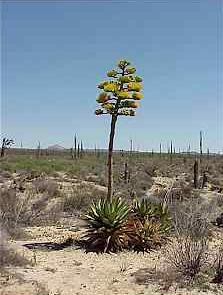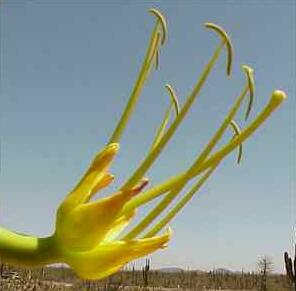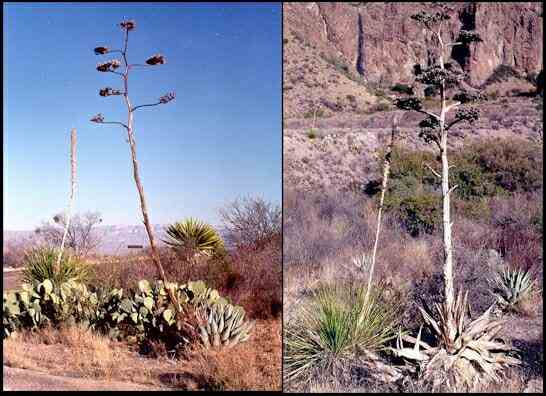|
Agave plants are commonly called "century plants". They live for many years as a rosette of thick, fleshy leaves, then flower once (often 30 years or so) and die. However, by this stage they usually have produced a cluster of younger plants, from stolons arising from ther parent plant. Only the rosette that produces the flowering stem dies. The other plants live on. Many Agave plants are quite large and produce a spectacular flowering stalk. An example of this is the Coastal agave (Agave shawii) of California and the Baja Peninsula. It is shown in the images below. Several other species of agave are found on dry, rocky slopes of the Chihuahuan or Sonoran deserts. One of these species, Agave lecheguilla (shindagger, or lechuguilla), is highly characteristic of the Chihuahuan desert.. Agave plants have many uses, including the extraction of fibres from the leaves to produce rope, nets, etc. But perhaps the best known use is for producing the alcoholic drink tequila. The Mexican blue agave is used (and grown) commercially for this purpose. A sugar-rich solution is extracted from the centre of the rosette of leaves and then fermented and distilled to produce the drink.
|




